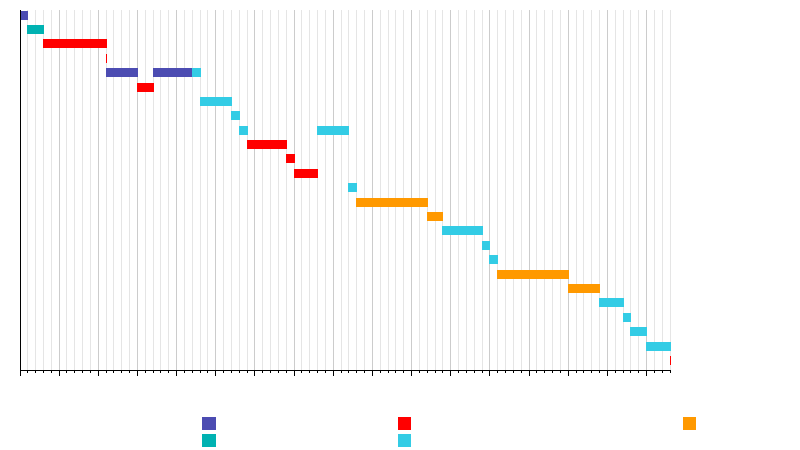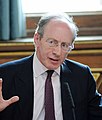Prime Minister of Estmere
| Prime Minister of the Commonwealth of Estmere | |
|---|---|
| File:Estmere Arms.png Coat of Arms of Estmere | |
| Style | The Right Honourable |
| Abbreviation | PM |
| Member of | |
| Reports to | President and the Chamber of Commons |
| Residence | Moorwood House |
| Seat | Northabbey |
| Appointer | President of Estmere On the condition that they command a majority in the Chamber of Commons. |
| Term length | No set limit Can remain in office so long as they command a majority in the Chamber of Commons. |
| Inaugural holder | Earl of Calliwell |
| Formation | 14 November 1701 |
| Deputy | Deputy Prime Minister |
| Salary | €140,000 per annum |
| Website | primeminister |
The Prime Minister of Estmere (Swathish: Forġerėf af Ėastmẹrland, Flurian: Premier d'Estme) is the head of government of Estmere. As per the Northabbey model, the Prime Minister acts as the leader of the executive branch and is also a member of the Chamber of Commons, the legislature.
The roles and responsibities of the Prime Minister is outlined in the Estmerish constitution. The Prime Minister is appointed by the President on the condition that they can command a majority in the Chamber of Commons, and can remain in office so long as they can continue to command the confidence of the Chamber. The Prime Miniser is generally a leader of a political party because of this, and can be removed from office through a vote of no confidence in the Chamber of Commons. The Prime Minister is the commander-in-chief of the Estmerish Defence Force, and is the Estmerish member of the Euclean Conference.
The incumbent is Zoe Halivar of the Social Democratic and Co-operative Party, who has served as Prime Minister since 3 June 2021. There has been x Prime Ministers, the first being Rupert Pennrible, Earl of Calliwell. The longest serving Prime Minister of all time was Sir Percival Augustus Hargreave, who served for 32 years, while Robert Reynolds was the longest serving in the republican period, serving for 9 and a half years.
Constitutional outline
The office of Prime Minister is outlined in the Estmerish constitution. The constitution essentially standardised the position, which had been part of the uncodified constitution of Estmere for centuries, and also defined the relationship between the Prime Minister and the head of state - which had previously been the monarch, but was now the President - though in practice the relationship remained similar.
History
Background and foundation
The position of High Bailiff, under the late Vernon dynasty, has been compared to the later position of Prime Minister, though notably it was accountable only to the sovereign, not to Parliament or the wider population; the position was abolished with the ascension of the House of Hardouin. After Parliament emerged as a powerful institution, it was not uncommon for the Lord Speaker of the Chamber of Lords to act as a leader and representative of the body, though this was generally in an unofficial measure, was without legal precedence, and was generally opposed by the monarch.
The position of Prime Minister was first established in 1701, though prior to this it was common for a prominent individuals to emerge as a primus inter pares among the Cabinet ministers; it was not uncommon for these figures to also be royal favourites. A number of former prominent ministerial cabinet positions, such as Lord High Steward, Lord High Chancellor and Lord High Treasurer, were merged into the new position of Prime Minister.
Early Prime Ministers
The Earl of Calliwell was the first Prime Minister of Estmere, being appointed by Louis III on 14 November 1701. Parliament and wider politics at the time was divided between two camps, both of which traced their origin to the Last War of the Counts. The two factions were the Royalists, who believed in the divine right of kings and parliamentary subservience to the Crown, and the Legalists, who believed in popular sovereignty and constitutional monarchy. Louis III detested the Legalists, and hoped that by empowering Pennrible, a staunch Royalist, he could mitigate their power in the Chamber of Commons. Pennrible was a capable political actor, and through a consolidation of Royalist power, he was able to weaken the hold that the Legalists had on the lower chamber. He served as Prime Minister for just over twenty years.
Louis III's death in 1736 led to the ascension of Mary II, who was considered a patron of the Legalists. Mary dismissed the Earl of Delafontaine, replacing him with the Duke of Ponsonby, another Royalist. The Duke only served briefly, however, and was replaced by Legalist leader Sir Percival Augustus Hargreave, a favourite of Mary and the first Prime Minister from the Chamber of Commons. Hargreave served as Prime Minister for almost thirty three years, and established most of the customs and powers associated with the role of Prime Minister. The relationship between the Prime Minister, as head of government, and the head of state was also slowly established, as the majority of administrative functions were granted to the Prime Minister and the monarch became a less active observer.
Union with Borland
The kingdoms of Estmere and Borland entered into personal union in 1774, when the death of the childless only child Mary II saw the throne of Estmere inherited by the king of Borland, who became king of both countries as Edward I and IV. The parliaments of the two countries remained distinct until the crown passed to Edward II in 1789, who worked with the Estmerish Parliament to bring Estmere and Borland together into a closer union. After the defeat of the Borish lords, the kingdoms were united into the Kingdom of Great Estmere in 1808, and the Borish legislature was subsumed into the Estmerish to form a new legislature.
Early modern changes
Modern premiership

Powers and duties
Requirements
Apointment process
Amenities
Compared to other heads of government, the Prime Minister of Estmere has few amenities and privileges. This is due to custom; the earliest Prime Ministers were members of the aristocracy, who generally did not need additional amenities, and Sir Percival Augustus Hargreave argued that the position ought to be difficult, and without reward, to ensure that the position never fell into the hands of a would-be tyrant, usurper or someone who would place personal gain above the interests of the nation. Nevertheless, over the years a few amenities have become attached to the office.
Precedence and privileges
Style and form of address
Family
Residence
The Prime Minister has one official residence, Moorwood House in the city of Morwall. The building was formerly the headquarters of a small government ministry, but was transfered to the Prime Minister in 1985 to replace the older residence, Lonely Tower, which had formerly operated as a royal prison; the insuination having been that the Prime Minister was a prisoner to the state's wishes.
Moorwood House in Morwall, the official residence of the Prime Minister, since 1985.
Lonely Tower in Morwall, the previous official residence of the Prime Minister, until 1985.
Salary
List
Living former Prime Ministers
There are ten living former Prime Ministers. Robert Reynolds was the last Prime Minister to die, in 2017, having served from 1981 to 1990, the longest of any post-war Prime Minister. Richard Graham was the most recent Prime Minister to leave office, in 2018, and Melissa Smith is the oldest living former Prime Minister, at age 92.
Melissa Smith
served 1990-1992
born 1931 (age 92)Charles Phillips
served 1992-1997
born 1947 (age 76)Richard Hamilton
served 1997-1998
born 1947 (age 77)John Stephenson
served 1998-1999
born 1952 (age 71)Heidi Reid
served 1999-2008
born 1952 (age 71)Daniel Hawkins
served 2008-2012
born 1966 (age 57)Matthew Dawson
served 2012-2015
born 1962 (age 62)Alan Baskerville
served 2015-2016
born 1946 (age 77)Richard Graham
served 2016-2018
born 1978 (age 46)Reginald Wilton-Smyth
served 2018-2021
born 1978 (age 80)













